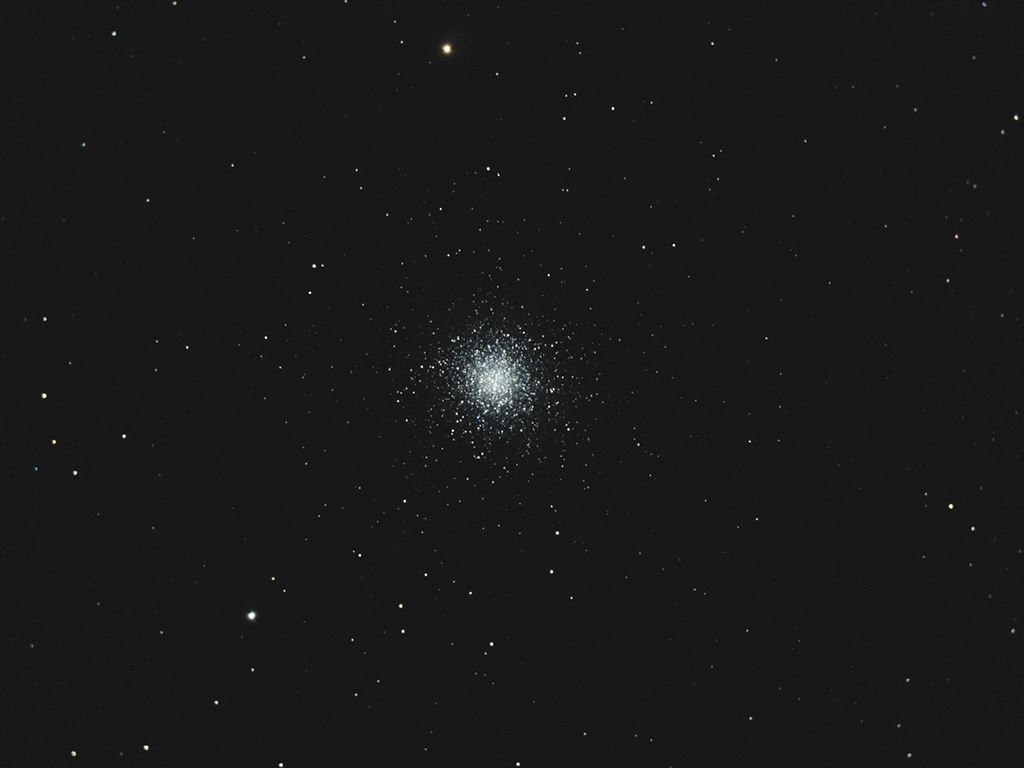
Telescope: LXD75 SC8 @ f/6.3, LX65 mount, altaz mode
Camera: Stock Canon 600D, interval timer
Filter: GSO IR Blocking Filter
Guide scope: None
Exposure: 37x10sec, ISO 1600, saved as RAW
Darks: Internal (Long Exposure Noise Reduction On)
Flats: 32×1/25sec, Tee shirt flats taken at dusk
Average Light Pollution: Red zone, Bortle 8, poor transparency
Lensed Sky Quality Meter: 18.2
Stacking: Mean with a 1-sigma clip.
White Balance: Nebulosity Automatic
Software: Deep Sky Stacker, Nebulosity, Photoshop
Globular clusters are relics of the ancient universe and M13 is no exception with an estimated age of 12 billion years. Their great age is an indication of their unusual stability. One consequence of this stability is that any heavy elements that their stars have made remains buried in their cores and the cluster itself has little, if any, interstellar dust. M13 is one of the few globular clusters with a dust-like feature that can be seen as a dark lane extending to the upper left of the core. It is possible that this dust lane is not really associated with M13, but instead is an independent object that just happens to be in front of the cluster.
This is part of a series of images that I am taking to explore deepsky imaging using fairly basic equipment and techniques and this is the second image taken with my LX65.
M13 is currently well placed high in the west after sunset.
Recent Comments